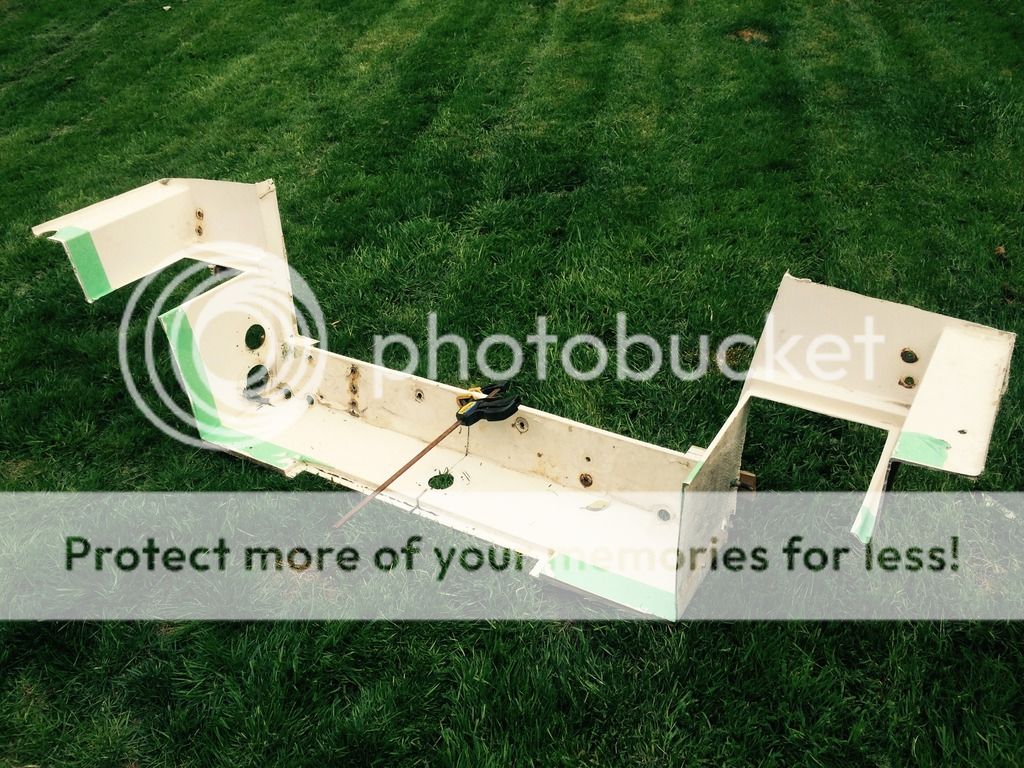I ran an open transom 22 Grady back in 91 out to Swiftsure and had it always had a wet deck from following swells coming over the transom. So much so that it found a way into the bilge and got to the point where there was enough water down there that I sensed a slower than normal return to a level deck after a big wave heeled us over. I didn't even look I flashed up the mains, told everyone to pull gear and move forward, after we were under way I had someone go aft and take a peak down the battery hatch to see how much water was down there. They were submerged!!! We replaced the bilge fuse and pumped water as we headed back to Renfrew. The boat would not plane, even with twins. By about half way back we were light enough to get up on step. My advice...make it a full transom and pod it!! I know the twins were part of the problem as the boat sat lower in the water than yours will with a single but I still like to have a good barrier to keep water on the right side of the hull.
You are using an out of date browser. It may not display this or other websites correctly.
You should upgrade or use an alternative browser.
You should upgrade or use an alternative browser.
Rotten transom in my new (to me)Grady!!
- Thread starter Scoopy
- Start date
I had the same year grady and it had a rotten transom,http://www.sportfishingbc.com/forum...om-Rebuild-228-grady&highlight=rotten+transom
I think the leak thru the aluminum trim that is between the inner shell and hull, instead of using the trim use fibreglass and completely seal it.
I am gonna seal the top up tight. The low hull and aluminum trim was a very bad design. Nice job on the rebuild! Makes me think about closing in my transom and going with a pod. I just need a good pod at a good price!
I ran an open transom 22 Grady back in 91 out to Swiftsure and had it always had a wet deck from following swells coming over the transom. So much so that it found a way into the bilge and got to the point where there was enough water down there that I sensed a slower than normal return to a level deck after a big wave heeled us over. I didn't even look I flashed up the mains, told everyone to pull gear and move forward, after we were under way I had someone go aft and take a peak down the battery hatch to see how much water was down there. They were submerged!!! We replaced the bilge fuse and pumped water as we headed back to Renfrew. The boat would not plane, even with twins. By about half way back we were light enough to get up on step. My advice...make it a full transom and pod it!! I know the twins were part of the problem as the boat sat lower in the water than yours will with a single but I still like to have a good barrier to keep water on the right side of the hull.
That sounds scary. I am considering closing her in.
salmonkiller01
Well-Known Member
looks good, mine came out in 3 pieces, it will save you a lot of finishing work
Today I managed to get another 2 hours work done on the boat. basically just cleaning up the glass after the plywood removal. I used an old framing slick (that was so sharp you could shave with it) to scrape the inside of the transom. Worked really well. After that it was time to hit it with the Festool Rotex with 36 grit disc, set to grind mode. 45 min later I was done. I love that tool. The dustless is also a major bonus on a job like this.
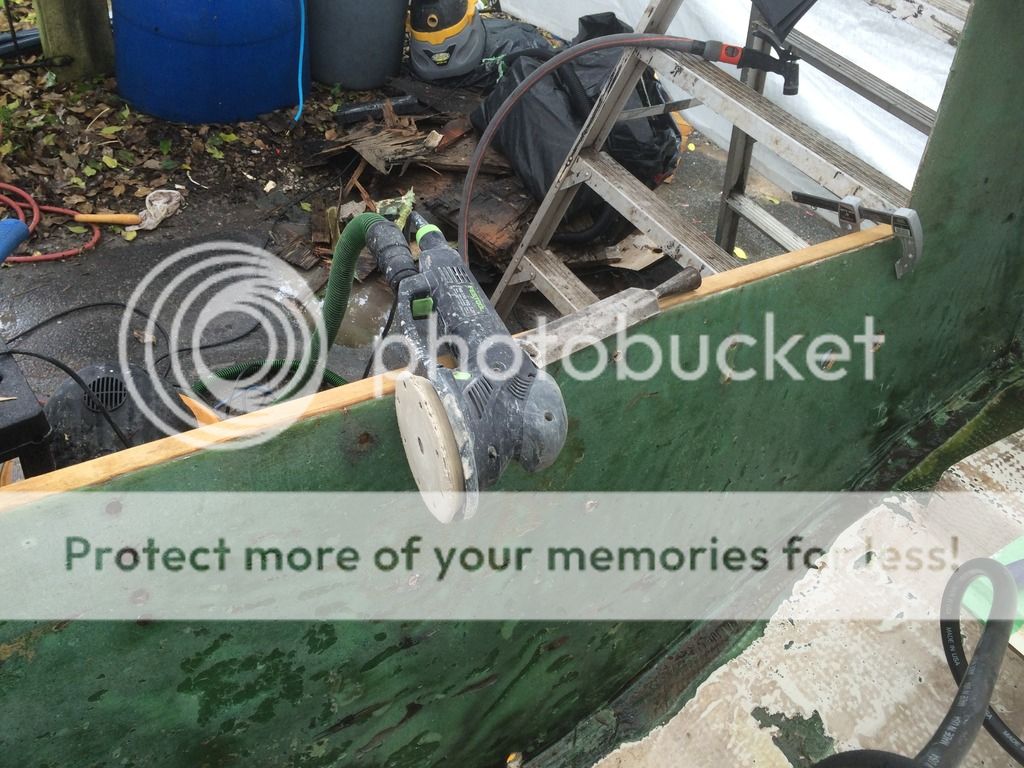
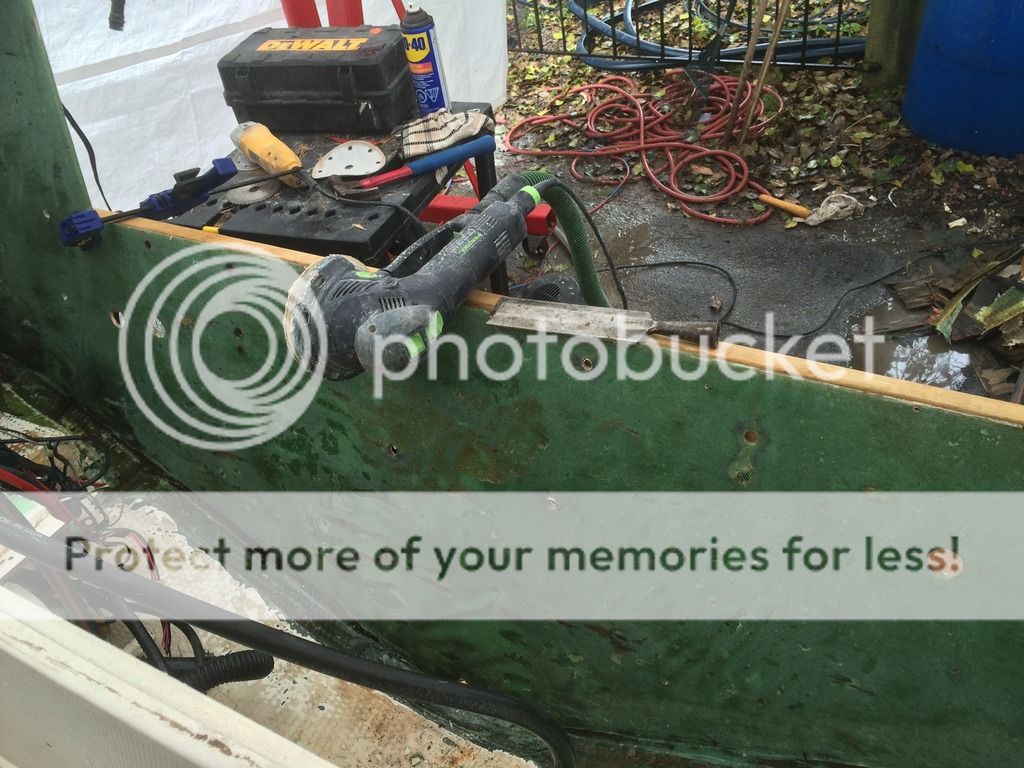
So basically I am 6.5 hours into this job and I am ready to start template making for the new plywood core. I picked up all of the epoxy and will be getting the plywood tomorrow. While the plywood dries out in my heated shop I plan on rewiring the boat. After I glass in the new transom and stringer ends I might as well splash some bilge coat on.


So basically I am 6.5 hours into this job and I am ready to start template making for the new plywood core. I picked up all of the epoxy and will be getting the plywood tomorrow. While the plywood dries out in my heated shop I plan on rewiring the boat. After I glass in the new transom and stringer ends I might as well splash some bilge coat on.
spring fever
Well-Known Member
Always amazes me how much talent there is by the guys and gals on this forum.
Sir Reel
Well-Known Member
Definitely talented people on here. Plus fun to watch the progress without getting fiberglass on us!Always amazes me how much talent there is by the guys and gals on this forum.
Cuba Libre
Well-Known Member
And then there are people like me that still use a crescent wrench for a hammer! I admire those of you that have have the know how to work through these problems.
albernifisher
Well-Known Member
Looks good, now is the time to add a full transom and bracket.
sly_karma
Crew Member
I went through this process a year or so back. Transom, deck, stringers. So much work but great feeling to know it's all completely sound, no short cuts. Like the Grady, my Lund had just an aluminum trim covering the joint between hull and upper. Not to mention the splash well drain was missing its through hull fitting when I first got the boat, lotta water went down that hole no doubt.
Still baffled by Tapatalk
Still baffled by Tapatalk
I managed to get back onto the boat this evening. I left the 3 sheets of 3/4" select Fir plywood in my shop with the heat cranked and a fan on it for the weekend, just to make sure it was totally dry. I used a thin Mahogany door skin to template the transom. I basically clamped it to the back of the boat and traced the outline of the hull and the transom cut out. I took it off and used a tape and square to get the inside measurments.

I transfered the inside transom measurements to my 3/4 fir. I screwed the 3 sheets together and cut them all at once with a circ saw and a jigsaw. Once done I wrapped them in shrinkwrap and took them back to the boat
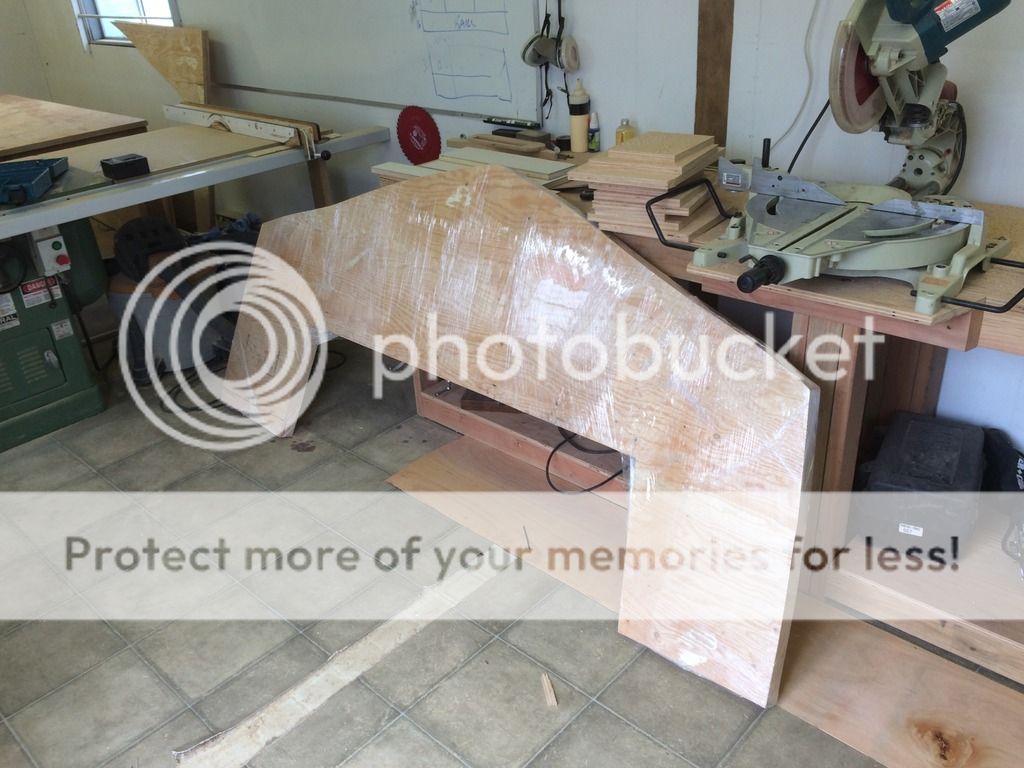

I transfered the inside transom measurements to my 3/4 fir. I screwed the 3 sheets together and cut them all at once with a circ saw and a jigsaw. Once done I wrapped them in shrinkwrap and took them back to the boat

Now comes the messy part. I would highly suggest wearing gloves and a crappy long sleeve shirt for the next part!
Here are the products being used for the first transom lamination.
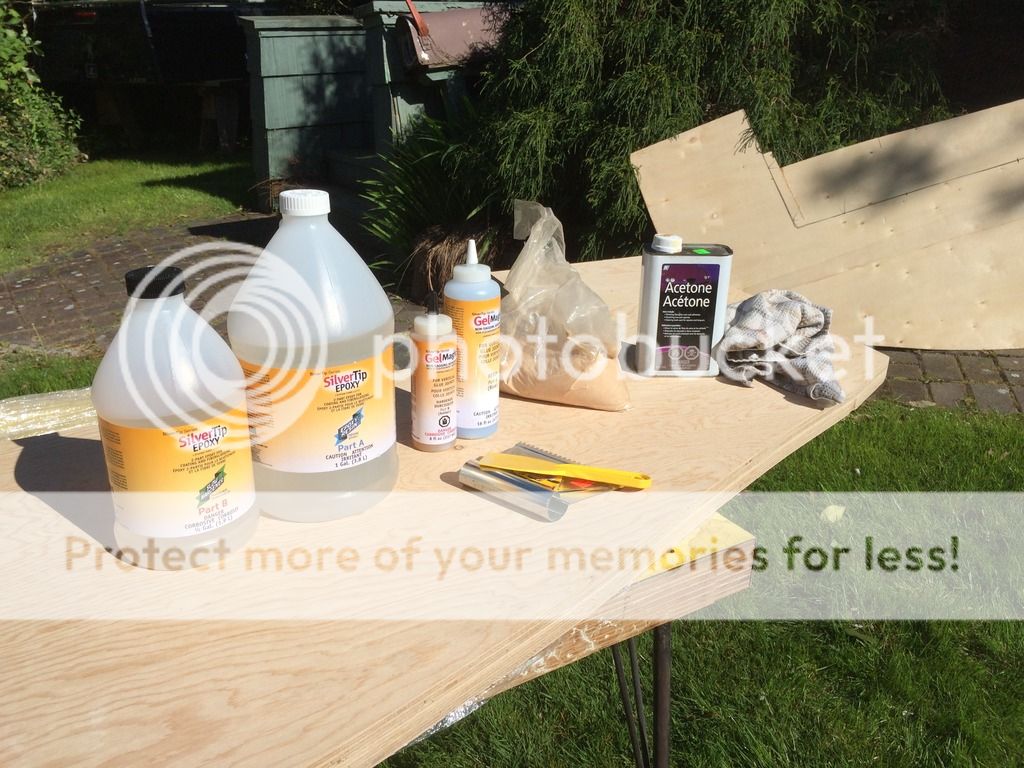
I was able to get the first piece of the 3/4" ply into place in 1 piece. Once in, I spatulad thin coat of plain epoxy onto the side of the plywood that would be going against the glass and on the glass itself I used a notched trowel to apply a heavy coat of the same epoxy, thickened with wood flour. Once the plywood was set it was clamped into place.
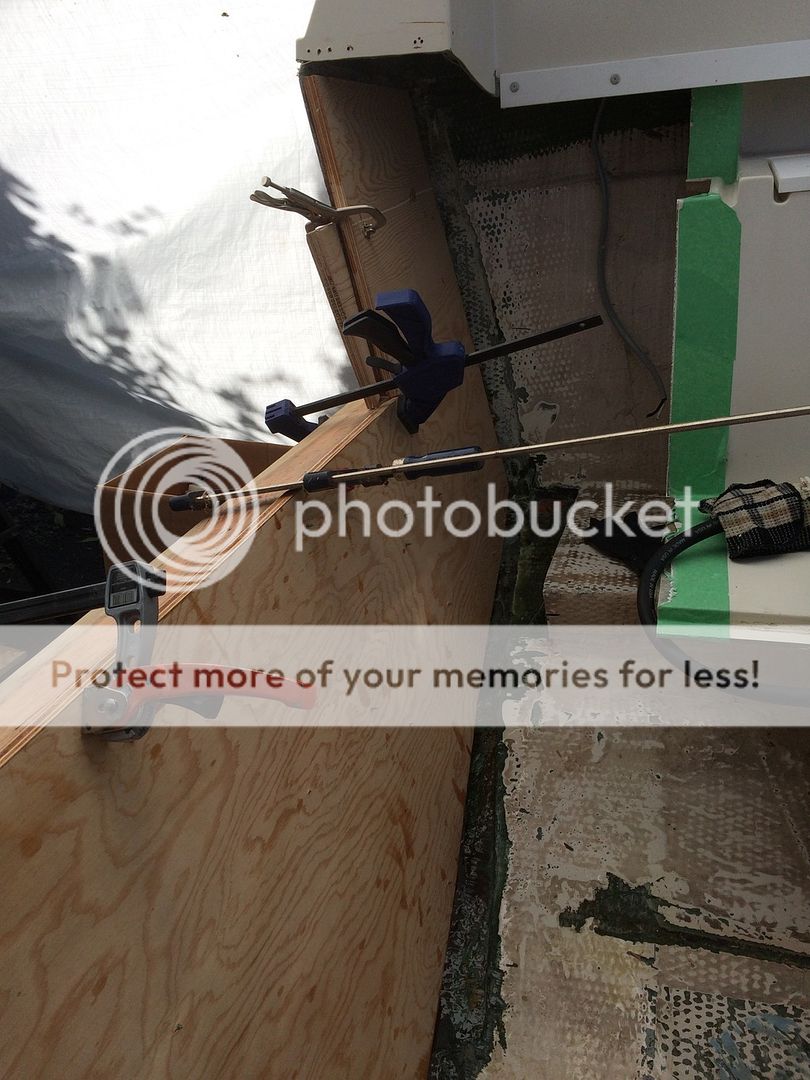
Next, I used 2" screws drilled through a plywood washer and into an existing hole in the fibreglass to pull the inside ply tight to the glass. The plywood squares act as big washers and help apply pressure to both surfaces, ensuring a good glue up.
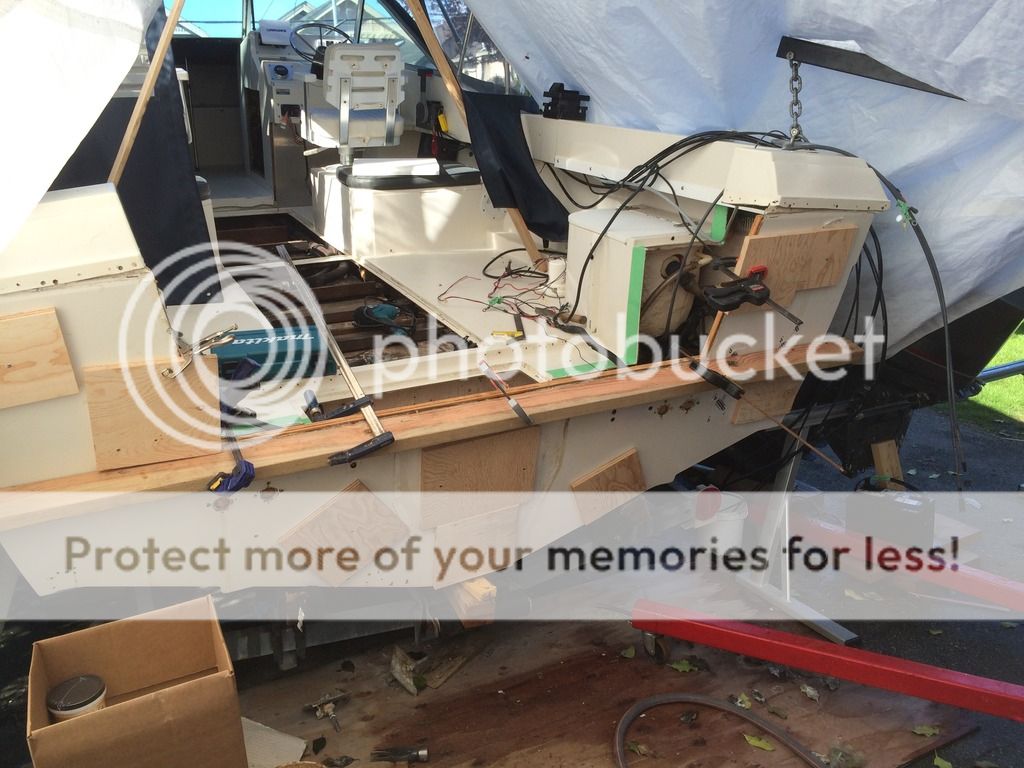
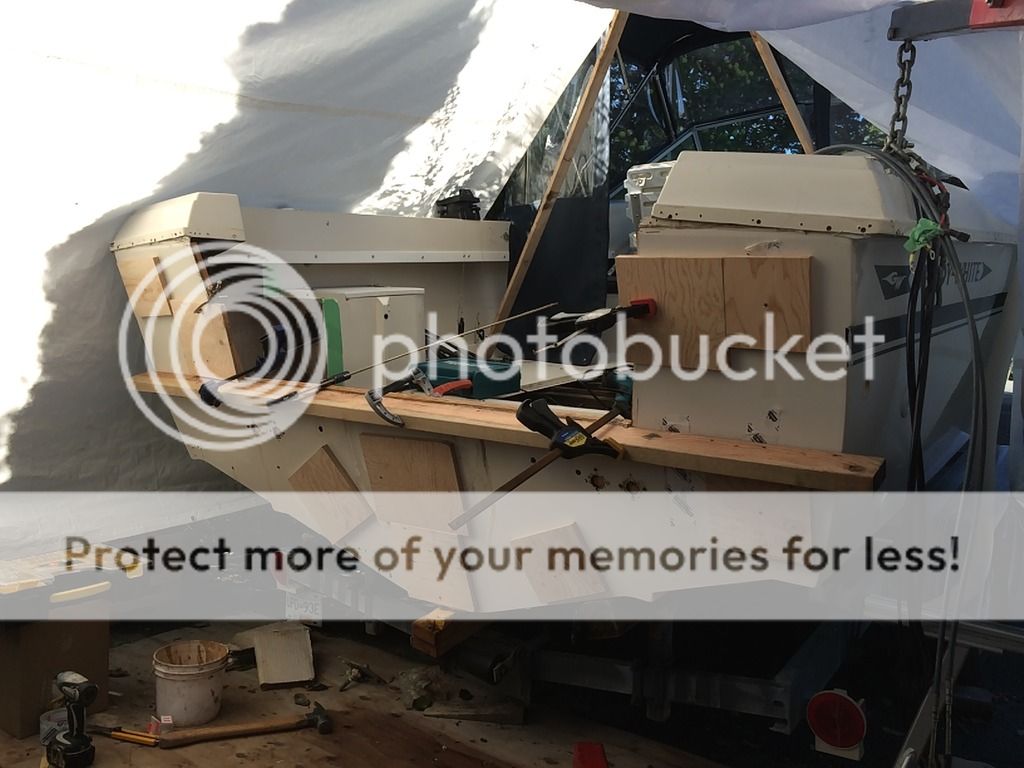
At this point, I am 9 hours into the project. And roughly 350 ml of scotch.
Here are the products being used for the first transom lamination.

I was able to get the first piece of the 3/4" ply into place in 1 piece. Once in, I spatulad thin coat of plain epoxy onto the side of the plywood that would be going against the glass and on the glass itself I used a notched trowel to apply a heavy coat of the same epoxy, thickened with wood flour. Once the plywood was set it was clamped into place.

Next, I used 2" screws drilled through a plywood washer and into an existing hole in the fibreglass to pull the inside ply tight to the glass. The plywood squares act as big washers and help apply pressure to both surfaces, ensuring a good glue up.


At this point, I am 9 hours into the project. And roughly 350 ml of scotch.
Last edited by a moderator:
Are the plywood washers only being used to glue plywood to outer glass skin? If so could you have used a timber brace on the inside with bottle jacks pushing back against the plywood to do the same without the need to drill holes?
Absolutely. My transom had so many holes in it I figured this would work well enough. There are screws in the smaller holes that you probably cant see in the pics. I have a couple of 2x4 jammers braced off of the inside bulk head as well.
Are the plywood washers only being used to glue plywood to outer glass skin? If so could you have used a timber brace on the inside with bottle jacks pushing back against the plywood to do the same without the need to drill holes?
Absolutely. My transom had so many holes in it I figured this would work well enough. There are screws in the smaller holes that you probably cant see in the pics. I have a couple of 2x4 jammers braced off of the inside bulk head as well.
Similar threads
- Replies
- 56
- Views
- 5K
- Replies
- 353
- Views
- 57K


